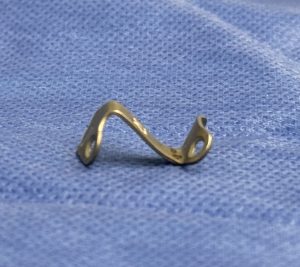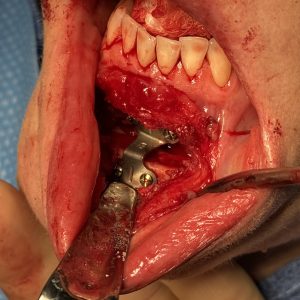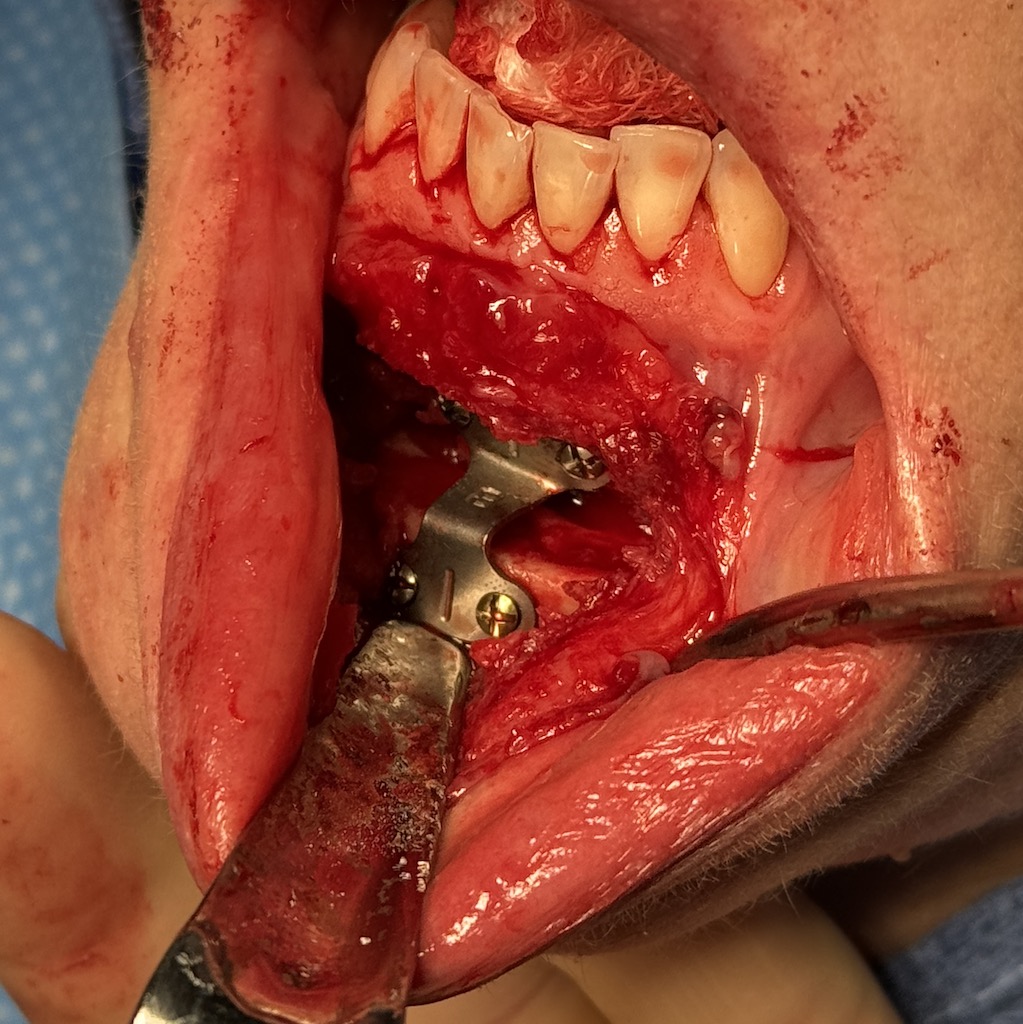The sliding genioplasty gets its name from its origin well over a half century ago. At that time here was only one bone fixation technique to hold the bone into its new position…wire fixation. Passing wire ligatures from the buccal cortex superiorly and the lingual cortex of the mobilized chin bone segments inferiorly when twisted down tight the two bone segments are compressed together. As a result the mobilized chin bone segment is compressed against the upper bone segment and essentially ‘slides’ along the osteotomy cut as it comes forward.
While wire fixation is effective for sliding geniplasty fixation it is dimensionally limited. The chin advancement can only come as far forward as the overlap of the front edge of the intact chin above and the back edge of the mobilized chin below will allow. It will not permit any vertical lengthening unless an interpositional bone graft is placed between the two chin segments. It will allow for vertical shortening if bone is removed along the osteotomy line. But despite these limitations there is one aesthetically unrecognized benefit to wire fixation…it does not allow the chin to become vertically lengthened as it comes forward.
The same can not be said for the more common use of plate fixation today. One huge advantage of a plate for chin fixation is that the dimensions of the chin movement can be better controlled and thus is a multidimensional fixation method. But because the plate has a 90 degree bend from the screw holes and the osteotomy cut is made at an oblique angle the chin can inadvertently become elongated as it is brought forward as the fixation plate is secured. The more the chin is horizontally advanced the more the inadvertent lengthening may become apparent. Such inadvertent lengthening will reduce the desired horizontal effect as well.


Dr. Barry Eppley
World-Renowned Plastic Surgeon



